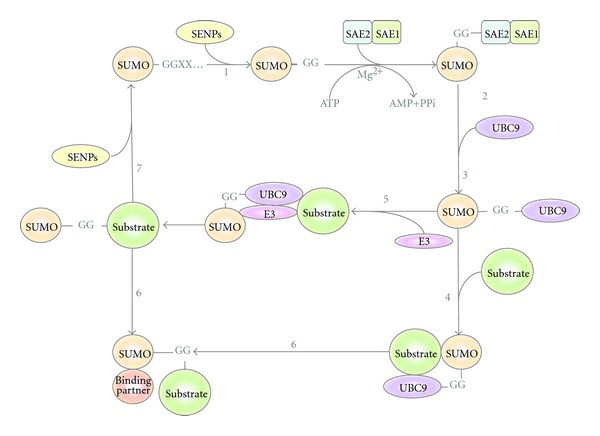Figure 2.

The SUMO conjugation pathway. The immature form of the Small Ubiquitin MOdifier (SUMO) undergoes processing by Ubiquitin-like protein-specific protease (Ulp) and SUMO/Sentrin-specific proteases (/SENPs) to generate its mature form (step 1), revealing a carboxy-terminal Gly-Gly motif. SUMO is then adenylated by the Aos1/Uba2 also named SAE1/SAE2 complex in an ATP·Mg2+-dependent reaction (step 2). Following activation, SUMO is transferred to the catalytic Cys of the E2 conjugating enzyme (UBC9) (step 3), which can then catalyze SUMO conjugation to a substrate containing the SUMO consensus motifs (ΨK x E) in an E3 ligase-independent (step 4). SUMO E3 ligases can also facilitate SUMO transfer to the substrate proteins (step 5). Substrates modified by SUMO can interact with SUMO-binding proteins through their SUMO-interacting motifs (SIMs) (step 6). SUMO-deconjugation is promoted by Ulp and SUSP/SENP proteases. Free SUMO can be recycled for another round of protein conjugation (step 7).
